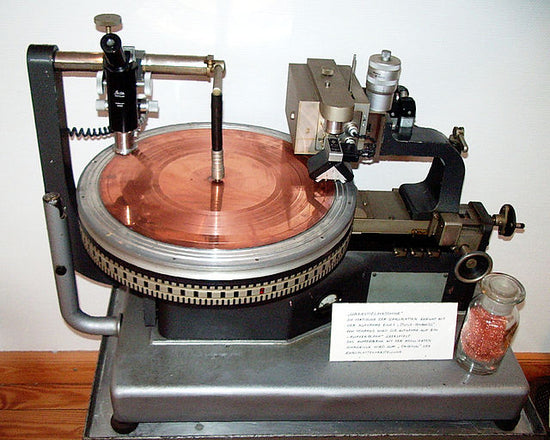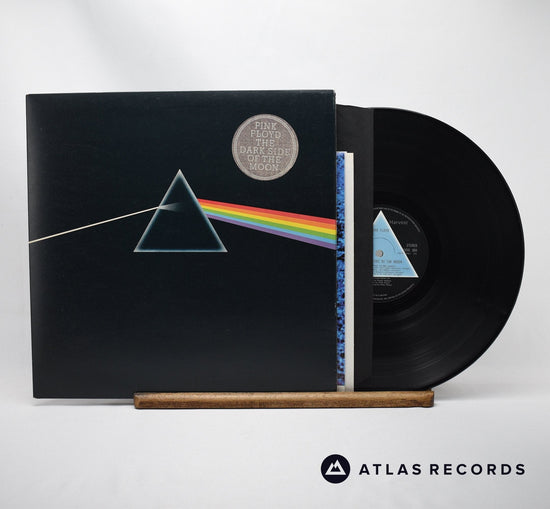A quadraphonic record, often referred to as a quadraphonic disc or simply "quad" record, is a type of audio recording format that was popular in the 1970s.
It was an attempt to create a more immersive listening experience. Quadraphonic audio aimed to reproduce sound in four discrete channels, as opposed to the two channels (stereo) used in standard audio recordings.
Quadraphonic records contain four separate audio channels: front left, front right, rear left, and rear right. These channels are intended to provide a surround sound experience, allowing audio to come from both the front and rear of the listener.


There were several competing quadraphonic formats, but many of them used matrix encoding to fit the four channels onto a standard vinyl LP (long-playing) record. Matrix encoding involves combining the audio signals in a way that allows them to be decoded into the original four channels during playback.
Quadraphonic Records: Did you know?
Quadraphonic systems are and were not limited to vinyl records. Quadraphonic is simply a ‘type’ of surround sound. The very first quadraphonic machines were analogue reel-to-reel tape recorders, which were made for use by audio engineers.
The very earliest four-channel systems being designed for home use began development in the late 1960s, and these are what ended up being released to be enjoyed through the medium of vinyl records, although not until the 1970s, and even then, they did not gain major popularity.
Quadraphonic records were designed to be played on regular stereo turntables and amplifiers, so listeners could enjoy them without specialized equipment. However, to decode the quadraphonic effect, a quadraphonic decoder or receiver was necessary.
Some of the most well-known quadraphonic systems
CBS/Columbia Records: CBS Records (now Sony Music) was a major player in the quadraphonic market. They used the "SQ" (Stereo Quadraphonic) matrix encoding system.
RCA Records: RCA Records (alongside JVC) introduced the "CD-4" (Compatible Discrete 4) quadraphonic system.
Quadradisc: This was another name for the CD-4 technology.
Many recording companies took on either of the above technologies, including names like Arista, Elektra, Harvest, EMI, Reprise and HMV.

Despite the initial excitement surrounding quadraphonic audio, it didn't achieve widespread commercial success. There were compatibility issues between different quadraphonic systems, and the market was divided among competing formats. Additionally, many consumers were satisfied with stereo sound and didn't see a compelling reason to upgrade.
While quadraphonic records are no longer a mainstream format, some audiophiles and collectors appreciate them for their historical value. There is still a niche market for quadraphonic recordings, and vintage quadraphonic equipment can be found among audio enthusiasts.
It's worth noting that modern surround sound systems, which are commonly used for home theatre setups and gaming, have evolved significantly from the quadraphonic concept, and typically use more than four channels for a more immersive audio experience.










5 comments
Im 66 yrs old and remember listening to Ironman we would be sitting around my friends apt and would jam , thank you for bringing the memories back. PARTY
Im 66 yrs old and remember listening to Ironman we would be sitting around my friends apt and would jam , thank you for bringing the memories back. PARTY
I watched the video “Here’s a great video about quadraphonic records” which showed a piece of hardware that appeared to be both an SQ and QS decoder. The person speaking was making the point that one would need thoes connection ports to play back SQ and QS. I am asking about the piece of equipment shown in the video. Is that piece of equipment a quadraphonic decoder???? or just a demo of the type of output connections required to hear SQ and QS?
I do have the fully restored quadraphonic equipment to play vinyl CD4, QS (RM), SQ and several other very simple SQ like formats. QS and RM are identical formats. The CD4 format requires a special stylus and cartridge for the turntable. The Japanese produced many CD4 and RM records not produced or marketed anywhere else in the world. In Euorpe there were many SQ records produced but not marketed outside of Euorpe. I have only found 1 System H recording and it does not decode well on any of my format settings.
Hi
Have read your description of Quadrophonie in the 1970’s and 80’s and found it very incomplete as per the conplanies involved, and their systems.
The first ommision is Sansui’s QS system, which was in direct competition with CBS’s SQ.
But before the big two got to fight it out there were two other systems, who released their own system encoded albums, which still appear on the second hand market.
These systems were: Toshiba – QM and Denon – QX, both very well known companies, even today.
There are two very important Quad systems that appeared from “The BBC”
At first there were the experimental “Matrix H” broadcasts starting Spring 1977. The matrix was modified and all Quad broadcasts in 1978 were encoded using “System HJ”
Virgin released one LP in “Matrix H”, but pulled out of releasing other albams that were in production/planned after the BBC altered the matrix {incompatible]. Also the BBC “Matrix H” test album was leaked and comes up for sail often.
The Welsh Classical company "Nimbus"released a few QS encoded albums, then switched over to “System HJ” for some of the best sounding, and imaged, recordings i’ve head.
Of course “System HJ” barely barely made it into 1979 when, the BBC did the dirty on their own technical team and handed over their work to Denon and those behind the “45j” sytem, which gave birth the “UHJ”, a systwm that is still in use to this day by “Nimbus” where at least 95% of their output is UHJ encoded.
Returning to the BBC’s Quad tests, the recordings ar now being release as “Bonus Tracks” on many CD sets nowadays, and [once decoded] sound as fresh as they did in the 1970’s.
Oh, by the way, i have created up to date decoding for all of the matrix systems used, allowing me to hear many well known albums in Quad.
Richard
Nimbus